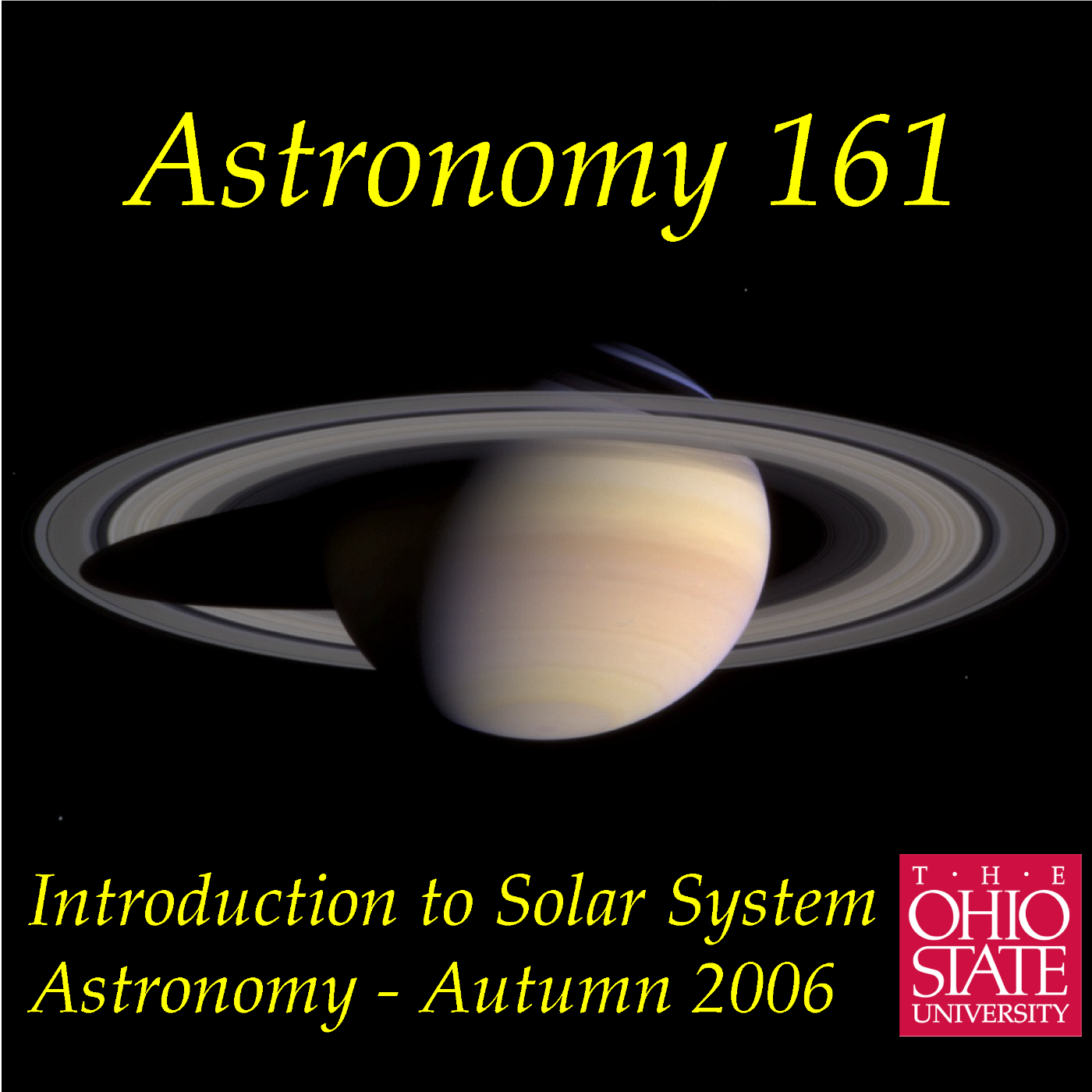Lecture 43: Icy Worlds of the Outer Solar System

Beyond the orbit of Neptune is the realm of the icy worlds, ranging in\nsize from Triton, the giant moon of Neptune, and the dwarf planets Pluto\nand Eris, all the way down to the nuclei of comets. This lecture\ndiscussed the icy bodies of the Trans-Neptunian regions of the Solar\nSystem, discussing the basic properties of Triton (the best studied such\nobject), Pluto, Eris, and the Kuiper Belt, introducing the dynamical\nfamilies of Trans-Neptunian Objects that record in their orbits the slow\nmigration of Neptune outwards during the early history of the Solar\nSystem. The Kuiper Belt is the icy analog of the main Asteroid Belt of\nthe inner Solar System: both are shaped by their gravitational\ninteraction with giant gas planets (Jupiter for the asteroids, Neptune\nfor the KBOs), and are composed of leftover raw materials from the\nformation of their respective regions of the Solar System. Recorded\n2006 Nov 28 in 100 Stillman Hall on the Columbus campus of The Ohio\nState University.